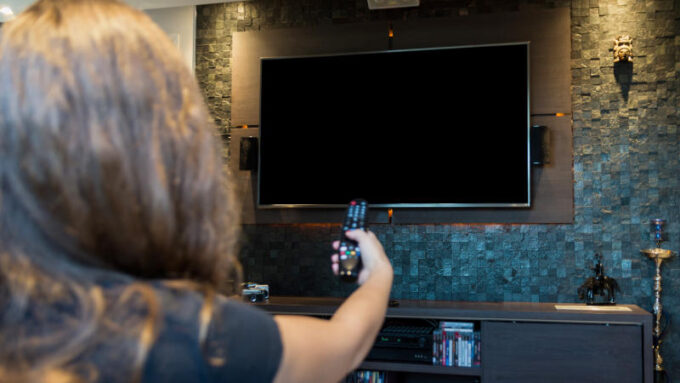
The future of Edge AI, with Tomoko Yokoi
In this edition of MATT from the IMD Podcast Network, hosts speak with Tomoko Yokoi about one of AI’s fastest-growing frontiers—Edge AI....
by Tomoko Yokoi Published May 23, 2024 in Technology • 6 min read
The increasing prominence of the finite nature of the world’s natural resources is prompting fierce arguments over who should be allowed access to them, with protectionism ratcheting up political tensions. However, there is conflict not only over the raw materials found on the Earth’s surface; there is also increasing rancor in relation to what is above us.
In a digitalizing world, the radio spectrum – the radio airwaves through which data can be transmitted – is an ever-more precious commodity. Moreover, as with other commodities, there is only so much of it to go around. Those who can’t gain access to as much spectrum as they require become vulnerable to serious economic, political and social consequences.
This is not a new problem. Governments and regulators worldwide have long agreed that an international “rulebook” is required to determine who can access the spectrum and how much each can have. The World Radiocommunication Conference (WRC) meets every four years to discuss whether it needs to update that rulebook.
“Currently, this regime limits the power any one operator can use to send radio signals, with the goal of preventing conflict between signals. This makes it possible to share spectrum more effectively ‒ but it also limits the amount of data that can be sent.”
Today, demand for spectrum is greater than ever, pitching countries, companies and organizations against one another. The prevailing spirit of consensus and cooperation may not withstand this competitive onslaught.
In the past, the big arguments over spectrum allocation have been between organizations operating satellites and providers of mobile and terrestrial telecoms services. The former require spectrum for applications ranging from military use to satellite television broadcasts. The latter, in contrast, are hungry for bandwidth for mobile data – particularly to accommodate the spread of 5G networks.
More recently, however, a new player has joined the contest. The proliferation of low-Earth orbit (LEO) satellites has seen operators of these networks demand a share of the spectrum, too. Elon Musk’s SpaceX Starlink network alone has launched 5,500 such satellites. Project Kuiper, backed by Amazon founder Jeff Bezos, aims to build a rival LEO network.
LEO operators are keen to update the regulatory regime governing the spectrum in order to secure greater access. Currently, this regime limits the power any one operator can use to send radio signals, with the goal of preventing conflict between signals. This makes it possible to share spectrum more effectively ‒ but it also limits the amount of data that can be sent.
At the most recent WRC, held in Dubai at the end of 2023, the LEO segment pushed for changes that would allow them to transmit at higher power levels. They argue that the existing caps were set 25 years ago and are now outdated. They claim that advances in technology allow for higher caps without any risk of increased signal interference.
Those proposals were defeated, partly by conventional satellite operators, which naturally want to limit the competition to which they are exposed, but also by a number of governments concerned about national investments made in sovereign satellite capacity. They fear a loss of spectrum to new entrants just as much as the incumbent commercial players.
However, in the long term, this position may be untenable. The WRC agreed to conduct a technical analysis of the consequences of raising power limits and the next WRC, in 2027, could see the balance of power tip in favor of those who see the current rulebook as outdated.
Given the very rapid expansion of these networks, the LEOs’ argument does seem increasingly credible. By 2032, there will be 28,800 satellites orbiting the planet according to estimates from Euroconsult, up from around 8,400 today.

But would it matter so much if the balance of power shifted on spectrum access? Naturally enough, until greater detail is available, many participants will remain wary.
One possible consequence is making it more of a challenge for sovereign governments to fulfil their primary function of ensuring the safety of their citizens. In the US, the Department of Defense has already raised concerns about the potential for a reallocation of radio spectrum to impinge upon its capabilities.
Another possibility is that spectrum capacity issues begin to impact end-users – both organizations and individuals. Consultant Deloitte has warned that this could soon begin to cause service issues, cutting phone calls and slowing broadband access, for example, particularly during peak usage periods. One solution could be to use price structure to manage access, with high-quality services available only to those prepared to pay top dollar.
That raises questions about equity and fairness that go well beyond whether citizens in developed economies will soon have to pay more to livestream sports events or their favorite Netflix show. Citizens in some parts of the world may find their basic services suffer if spectrum is rationed according to ability to pay.
That could set back the progress of developing countries, with their populations suffering as a result. The UN’s Digital Acceleration Agenda concludes that, of the UN’s 119 Sustainable Development Goals (SDGs), 70% would be more achievable with improved connectivity.
A related problem is the increasing congestion of space. Given the growing dependence on satellites as part of the critical infrastructure for services such as the internet, navigation and weather forecasting, some see an unsafe space environment as potentially disastrous. A collision between satellites, or with other space debris, could knock out a crucial component of such infrastructure.
None of which is to suggest that we should be wedded to the current rules on spectrum allocation and sharing. If regulators can encourage greater competition without unfairly disadvantaging any party or parties, this can only be a good thing for international telecoms.
Still, expect the arguments to continue, with all sides looking to marshal support. Two recently published papers arrived at almost diametrically opposed views on the economic debate, with one arguing that the gains from lifting the power caps on LEOs would substantially outweigh the costs to other networks ‒ and the other making the opposite case.
In the end, governments will call the shots. Last year’s WRC proposals were defeated by a broad coalition of actors. This included commercial players, but countries including Brazil, Japan and Indonesia led the way. Opponents to change may have different motives, but, to date, they have been happy to co-operate for mutual benefit.
Ultimately, nation states will hope to maintain a level playing field. The parallels between the current spectrum “grab” and the battle for Earth’s raw materials are many, but there is one significant difference.
With natural resources, from oil to rare earths, certain countries have a natural advantage because they happen to have large deposits within their territories. The same does not apply when it comes to the space above us. This means that there are no natural rights to the airwaves. However, this simply means that, where spectrum is concerned, there will be more fighters in the ring. To avoid missing out, all must remain vigilant.

Researcher, TONOMUS Global Center for Digital and AI Transformation
Tomoko Yokoi is an IMD researcher and senior business executive with expertise in digital business transformations, women in tech, and digital innovation. With 20 years of experience in B2B and B2C industries, her insights are regularly published in outlets such as Forbes and MIT Sloan Management Review.

August 12, 2025 • by Michael R. Wade, Amit M. Joshi in Technology
In this edition of MATT from the IMD Podcast Network, hosts speak with Tomoko Yokoi about one of AI’s fastest-growing frontiers—Edge AI....

July 10, 2025 • by Tomoko Yokoi, Michael R. Wade in Technology
The healthcare and pharmaceutical sectors are experiencing radical evolution through artificial intelligence, driving competition, and improving clinical outcomes. IMD's AI Maturity Index highlights effective approaches from industry frontrunners like Bayer, Medtronic, and...

July 10, 2025 • by Bruno Le Maire in Technology
Former French finance minister Bruno Le Maire says Europe needs to act urgently to secure its supply of semiconductors or face relegation to the global slow lane. ...
 Audio available
Audio available
July 1, 2025 • by Amit M. Joshi, José Parra Moyano, Ram Bala, Natarajan Balasubramanian in Technology
From the untamed rise of semi-autonomous agents to growing concerns around accountability and security risks, AI agents are creating new headaches for CIOs. Here's how tech leaders can navigate the challenges. ...
Explore first person business intelligence from top minds curated for a global executive audience